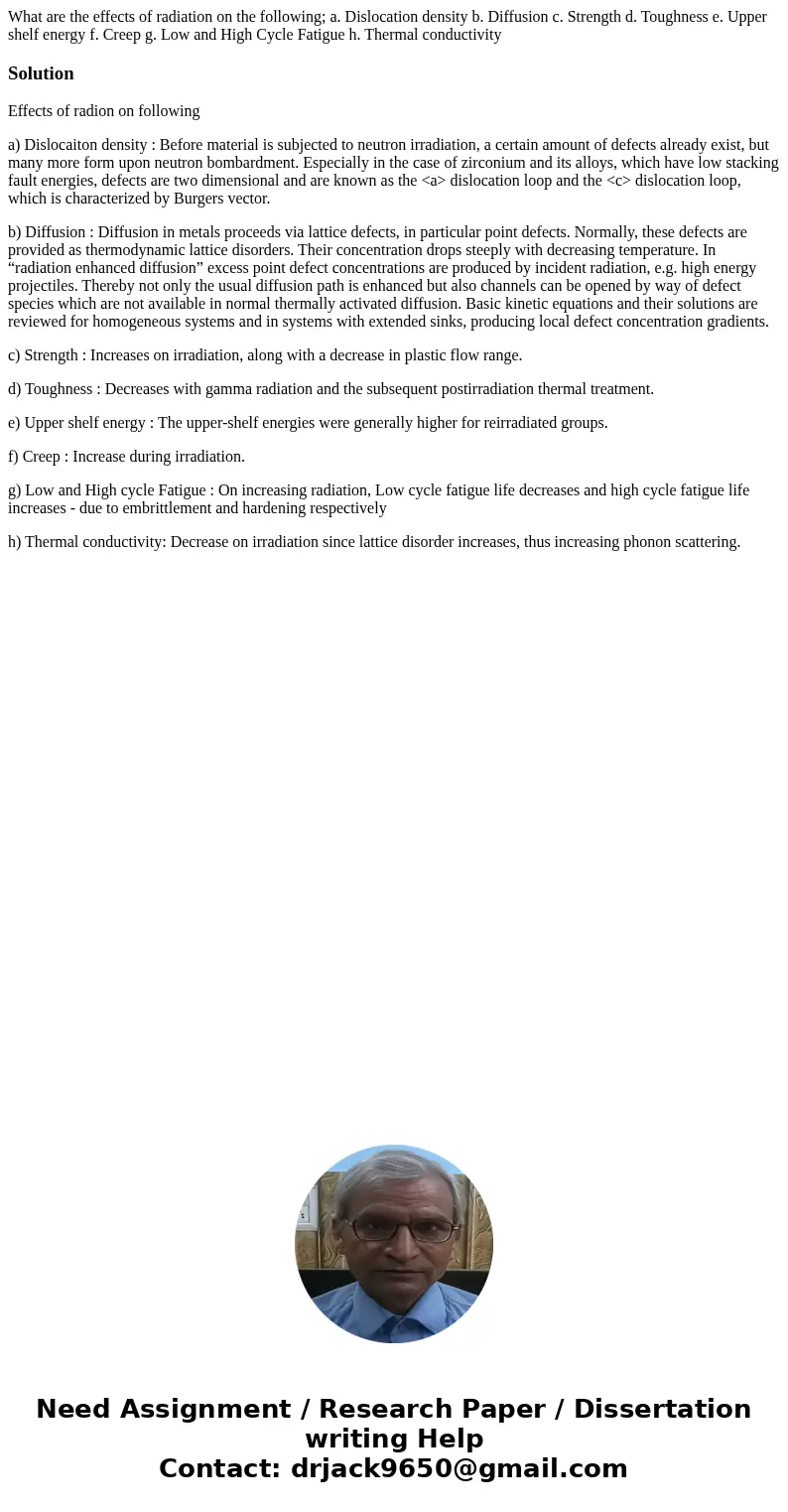What are the effects of radiation on the following a Disloca
What are the effects of radiation on the following; a. Dislocation density b. Diffusion c. Strength d. Toughness e. Upper shelf energy f. Creep g. Low and High Cycle Fatigue h. Thermal conductivity
Solution
Effects of radion on following
a) Dislocaiton density : Before material is subjected to neutron irradiation, a certain amount of defects already exist, but many more form upon neutron bombardment. Especially in the case of zirconium and its alloys, which have low stacking fault energies, defects are two dimensional and are known as the <a> dislocation loop and the <c> dislocation loop, which is characterized by Burgers vector.
b) Diffusion : Diffusion in metals proceeds via lattice defects, in particular point defects. Normally, these defects are provided as thermodynamic lattice disorders. Their concentration drops steeply with decreasing temperature. In “radiation enhanced diffusion” excess point defect concentrations are produced by incident radiation, e.g. high energy projectiles. Thereby not only the usual diffusion path is enhanced but also channels can be opened by way of defect species which are not available in normal thermally activated diffusion. Basic kinetic equations and their solutions are reviewed for homogeneous systems and in systems with extended sinks, producing local defect concentration gradients.
c) Strength : Increases on irradiation, along with a decrease in plastic flow range.
d) Toughness : Decreases with gamma radiation and the subsequent postirradiation thermal treatment.
e) Upper shelf energy : The upper-shelf energies were generally higher for reirradiated groups.
f) Creep : Increase during irradiation.
g) Low and High cycle Fatigue : On increasing radiation, Low cycle fatigue life decreases and high cycle fatigue life increases - due to embrittlement and hardening respectively
h) Thermal conductivity: Decrease on irradiation since lattice disorder increases, thus increasing phonon scattering.

 Homework Sourse
Homework Sourse